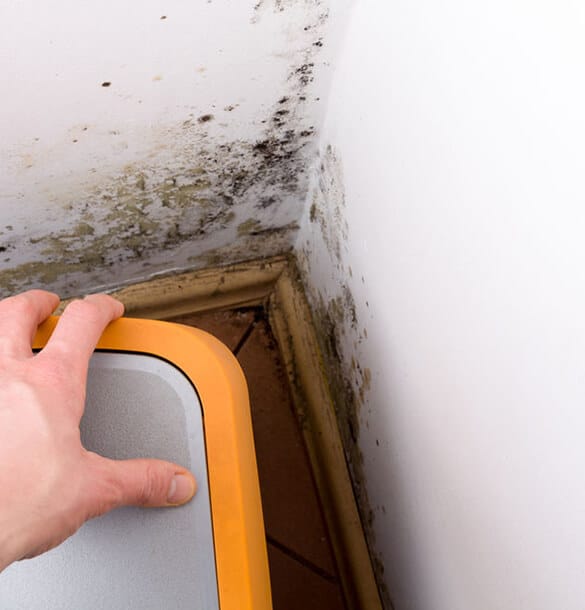Making Sure Post Remediation Verification Accuracy
Making Sure Post Remediation Verification Accuracy
Blog Article
Your Ultimate Overview to Blog Post Mold Removal Techniques
Browsing the world of post-mold removal strategies is a thorough process that requires attention to detail and a detailed understanding of the ins and outs involved. In the aftermath of mold invasion, understanding just how to successfully eliminate the mold and mildew and stop its reoccurrence is extremely important for preserving a healthy indoor atmosphere. From choosing the right cleaning and disinfecting approaches to implementing strategies for lasting mold and mildew prevention, each action in the remediation journey plays a crucial duty in guaranteeing an effective outcome. As we start this exploration of post-mold removal techniques, we will certainly uncover the essential strategies and finest practices that can assist you recover your area to its pre-mold condition and protect it against future mold risks.
Understanding Post-Mold Removal Refine
After completing the mold and mildew removal process, it is critical to comprehend the post-mold removal methods that are necessary to make certain a extensive and effective cleaning. As soon as the mold has actually been eliminated, the next step entails cleansing and disinfecting the influenced locations to stop any type of regrowth of mold. This consists of making use of specialized cleansing agents to wipe down surfaces and eliminate any remaining mold and mildew spores. It is vital to dry out the location completely to prevent the growth of mold and mildew in the future (Post Mold Remediation). Correct ventilation and dehumidification can aid in this process.
In addition, performing a final assessment post-remediation is important to make sure that all mold has actually been efficiently eradicated. This inspection must involve a detailed aesthetic check in addition to possibly air sampling to validate the absence of mold spores in the air. Added removal might be essential if the inspection reveals any remaining mold. Last but not least, enlightening passengers on safety nets such as controlling dampness degrees and promptly dealing with any water leaks can assist maintain a mold-free setting.
Reliable Cleaning Up and Sanitizing Approaches

Preventing Future Mold Growth

Importance of Proper Ventilation
Proper ventilation plays a crucial function in preventing moisture build-up, a vital factor in mold and mildew development within interior environments. Reliable ventilation systems aid eliminate excess moisture from the air, lowering the opportunities of mold spores discovering the dampness they require to sprout and spread. Without ample air flow, indoor rooms can end up being a breeding place for mold, causing prospective wellness dangers and architectural damage.
By making sure appropriate air circulation, ventilation systems can also help in drying out moist locations much more promptly after water damages or flooding occurrences, additionally hindering mold growth. Post Mold Remediation. Precede like shower rooms, basements, kitchen areas, and attic rooms where moisture degrees often tend to be higher, mounting and preserving reliable air flow systems is important in protecting against mold and mildew invasions

Tracking and Maintenance Tips
Provided Continue the critical function that proper ventilation plays in stopping mold and mildew growth, it is essential to develop effective surveillance and maintenance ideas to ensure the continued functionality of air flow systems. Tracking moisture degrees within the residential property is also essential, as high humidity can add to mold development. By staying alert and proactive to the problem of air flow systems, home proprietors can effectively alleviate the threat of mold and mildew regrowth and maintain a healthy and balanced interior setting.
Final Thought
To conclude, post-mold remediation techniques are crucial for making sure a clean and safe environment. Recognizing the process, applying effective cleansing and sanitizing methods, protecting against future mold growth, preserving appropriate air flow, and routine tracking are all critical action in the remediation process. By adhering to these guidelines, you can successfully eliminate mold and mildew and avoid its return, promoting a healthy living or functioning space for all owners.
In the consequences of mold and mildew infestation, understanding exactly how to effectively remove the mold and mildew and avoid its reoccurrence is vital for maintaining a healthy and balanced interior environment. Once the mold and mildew has actually been removed, the following Full Report action includes cleaning and decontaminating the impacted locations to avoid any type of regrowth of mold and mildew - what to do after mold remediation. After eliminating visible mold and mildew growth, it is important to clean up all surface areas in the affected location to eliminate any remaining mold and mildew spores. To further improve mold and mildew prevention steps, it is vital to deal with underlying problems that at first led to mold and mildew growth.Provided the essential role that appropriate air flow plays in protecting against mold and mildew growth, it is necessary to establish effective monitoring and upkeep tips to make sure the ongoing functionality of ventilation systems
Report this page